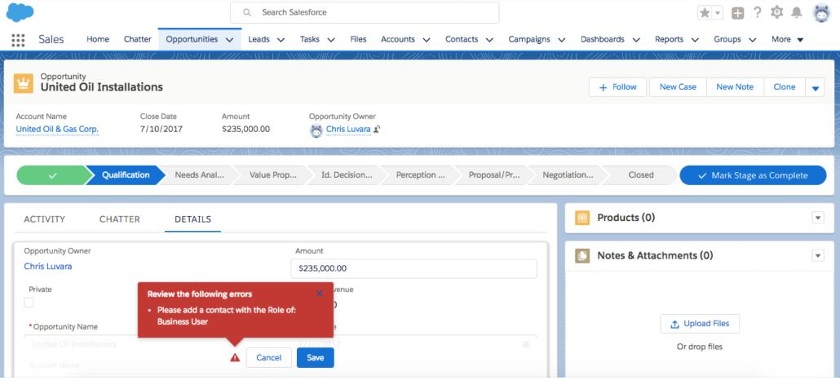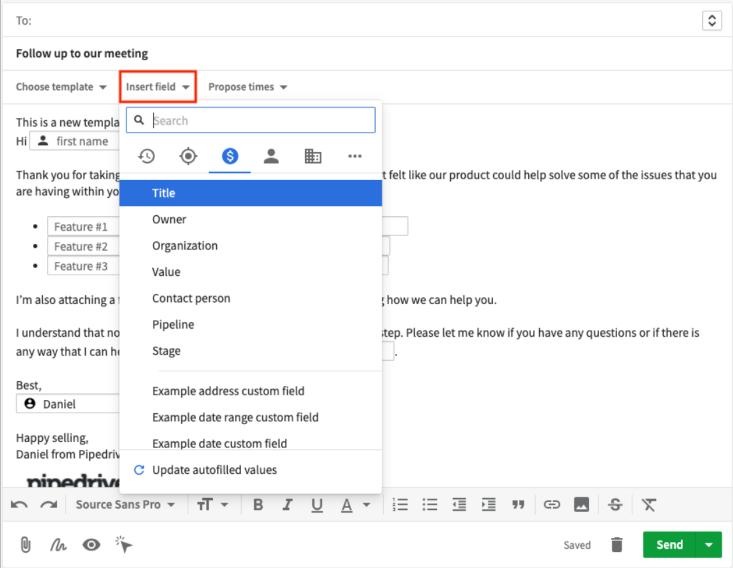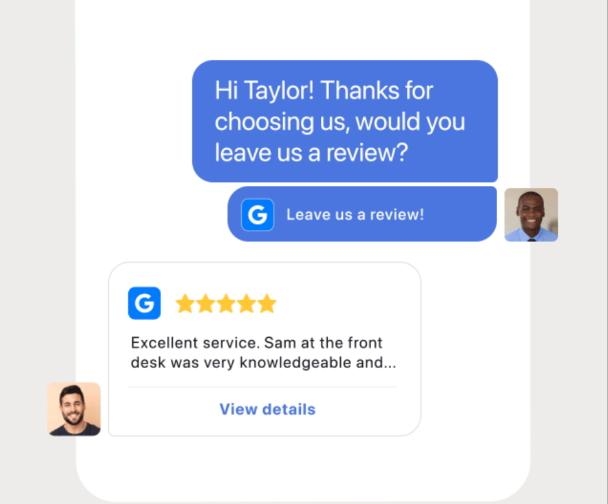A referral is an act of recommending a business, product, or service to new prospects. Leads generated through referrals are more likely to convert because they are already qualified. Small businesses also benefit from referrals by cutting the time they spend on cold calling, thereby reducing their sales expenses and sales cycle. Maximize your ability to get quality leads via referrals by following the steps and best practices described in this article.
1. Ask for Referrals From Existing & Past Customers
One of the simplest ways to get new leads is to have your revenue operations team request referrals from both existing and past customers. It could be as easy as thanking them for supporting your business and then asking them to pass along your information to their friends and family. Top-performing sales reps routinely ask their customers for referrals. However, only 18.6% of sales reps do this.
We recommend using the Net Promoter Score (NPS) method to correctly identify the right customers to ask for referrals. Depending on how satisfied the customer is with your business, they may fall into any of these three NPS categories:
- Promoter: Customer is likely to recommend, especially when given the opportunity to do so
- Passive: Customer is not likely to recommend but also not likely to give a poor review
- Detractor: Customer is likely to share a negative review
Customers who rate their satisfaction with your business with 9 or 10 out of 10 are the best ones to ask for referrals. They fall under “Promoter” since they are highly satisfied with your product or service.
Pro tip: Use lead generation software to save time through automatic lead generation and routing. With a tool like UpLead, you get access to over 85 million business-to-business (B2B) contact and company data worldwide. Its features include real-time email verification, account-based marketing, data enrichment, and competitor intelligence.
2. Join Leadshare Groups
Leadshare groups are networking associations that meet weekly or monthly for networking, professional development, and lead-sharing activities. One of their advantages is that there is usually only one vertical (e.g., information technology, sales management, etc.) per group. This helps ensure referrals made from other group members come to you.
In the same way, you also help grow the business of other members in your leadshare group by referring clients their way. Members also earn points for certain activities like referring customers, inviting new members, and attending one-on-one meetings with other members. This point system also helps maintain accountability.
Business Network International (BNI) is one of the largest leadshare groups in the world, with chapters worldwide. If you prefer regional groups, consider a group like NeXco, specifically for the Virginia, D.C., and Maryland area. Local Chambers of Commerce throughout the country may also have leadshare chapters within their organizations.
3. Build Strategic Partnerships
Generating referral leads through strategic partnerships is especially useful when businesses are complementary. For instance, if you are a website developer, partner with commercial photographers and videographers to pass leads back and forth since many aspects of a client’s project may overlap.
It’s common to see strategic partnerships in real estate, where groups are formed between a real estate agent, mortgage broker, title company, and insurance agent since all of their services are needed to close a real estate transaction. Though it makes sense to form these arrangements in complementary businesses, you can do it with anyone in a less formal way.
For example, if you meet another business owner who is well-networked, simply have a phone call with them to go over what each business does and what a good referral looks like. Your businesses don’t necessarily need to have any compatibility—just a solid connection between the owners or sales reps of that business.
Pro tip: Use customer relationship management (CRM) software to organize information about your referral sources as well as your leads and customers. Salesforce, for instance, lets you organize referral partner information like you would any lead or contact. You can also store this information in a lead’s records to streamline referral rewards and track lead sources.

Salesforce opportunity with partner’s record (Source: Salesforce)
4. Launch a Referral Program
A referral program is a promotional marketing method where the referrer receives an incentive in return for sending business your way. For example, your customer referral program could offer a 20% discount on their next purchase when they refer a new customer to your business. It could fall under these two types of referral programs:
- One-sided referral program: The referrer receives the incentive.
- Two-sided referral program: Both the referrer and the referred are rewarded.
When creating a referral program, include the form of the incentives, type of reward, and the frequency of the purchase. You also have to make sure your incentive is relevant to your business. For example, tech companies could give away gadgets as incentives, while online insurance platforms could give discounts and cash rewards.
Remember that a referral program requires organizational support, so your sales management team must incorporate it into your overall sales strategy and operations.
Pro tip: Use point-of-sale (POS) and customer loyalty tools like Lightspeed to handle transactions and manage customer relationships. Lightspeed allows you to create loyalty and referral programs that automatically award points or rewards to customers who share a referral code with their friends.

Lightspeed referral program configuration (Source: Lightspeed)
Best Practices for Generating More Referrals
Referral lead generation sources can include word-of-mouth recommendations, existing or past customers, other businesses, peers and colleagues, or your personal acquaintances. You may get spontaneous referrals from customers impressed with your product or service. In addition to leveraging one or more of the referral tactics above, there are other things you can do to optimize the tactics for lead generation or make your business more referable.
Here are seven best practices for creating more referral opportunities:
Make your business naturally more referable by exceeding the expectations of your customers and referred leads. This includes providing fast response times, giving customers a shoutout on social media, or adding a supplemental product or service at no extra charge. When you get the client’s attention through exceptional customer service, they’re more likely to share their great experience with others.
Did you know?
According to SaaSquatch’s State of Referral Marketing Report 2020, 18% of referred customers prove to be more loyal. They spend 13.2% more and have 16% higher lifetime values than non-referred customers.
Often, a referral source may have an excellent lead for you, but they don’t know how to make the introduction. Fix this issue by creating an email message template they can use to make the introduction. This should be a simple, text-based script they can easily use to plug in the relevant contact and contextual information, and then send the email to the recipient lead while cc:ing you.
Download our referral email templates below, edit them as you see fit, and send them to your customers to pass along to their acquaintances.
Thank you for downloading!
💡 Quick Tip:
Use customer relationship management (CRM) software to organize referral email templates for your sales team to access.
CRMs like Pipedrive store email templates and let you share them with other sales reps to send to their network for referral opportunities.
Pro tip: Use your customer relationship manager (CRM) to organize referral email templates for your sales team to access. CRMs like Pipedrive store email templates and let you share them with other sales reps to send to their network for referral opportunities.

Pipedrive email template (Source: Pipedrive)
Rewarding a referrer with cash incentives, gifts, gift cards, or promotional deals is a solid way to create referrals and works well with all referral tactics above. However, as mentioned in the previous section, it’s important to check the scope to which your industry legally allows referral incentives.
Did you know?
Dollar credit is the most popular type of referral reward across all industries in business models, as it is used in 50% of most referral programs for promoters. This is followed by gift cards (17.6%) and percentage discounts (9.8%).
Make sure you are showing gratitude to your referral sources by recognizing and thanking them for what they do. You can do this with a “thank-you” card or public recognition, such as a shoutout on social media. Show your appreciation after every referral or periodically, such as every year during the winter holiday season.
The best time to ask customers for a referral is immediately after they’ve expressed gratitude or left your business a great review. Keep that positive experience fresh in their minds so they instantly think of their friends, family, or work colleagues they can send over to get the same positive experience with your business.
Pro tip: Platforms like Podium let you manage your business’ reputation with review deployment automation. Businesses can see the satisfaction levels of their customers by auto-sending links to leave a review after delivery of the product or service.

Podium leaves a review link (Source: Podium)
If you don’t join a leadshare group or develop a strategic partnership with another business, you can still create an environment of reciprocity by referring your customers or people in your network to other businesses. Even without the formality of referral arrangements, if you refer business to them, they are more likely to tell others about your business in return.
Bottom Line
Referrals are one of the best sources of new and continuing sales opportunities. Businesses with a solid referral program in place prove to have more loyal and valuable customers. Combining customer referrals with our expert tips and recommended tools helps you fully leverage your network to keep populating your sales pipeline with qualified sales leads and opportunities.